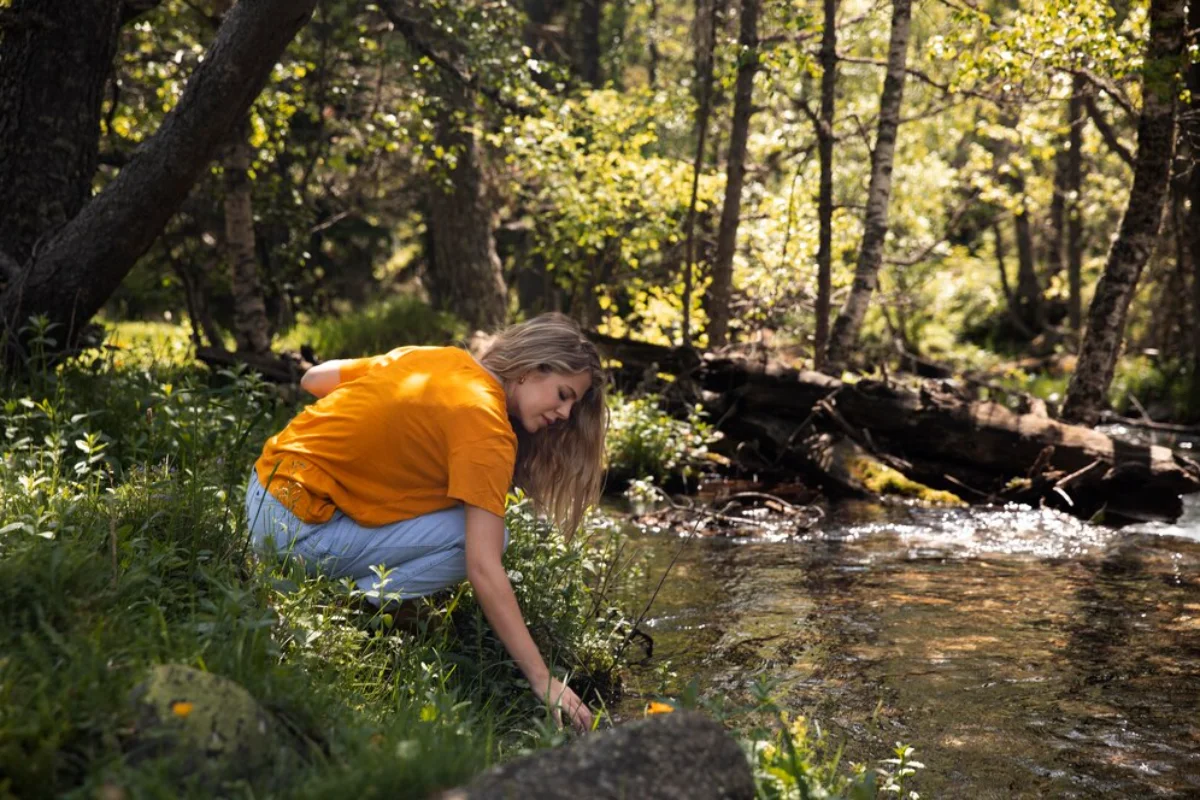
The Benefits of Forest Bathing for Stress Relief
Many people face a hard time with their blood pressure because of their busy lives. But there is a straightforward solution: forest bathing. This ritual, known as Shinrin-yoku in Japan, offers a way to reduce anxiety in some natural surroundings. But what is forest bathing? How could it contribute to our well-being? This article unpacks what forest bathing entails, how nature improves health, and why it’s among the best outdoor wellness activities today.

What is Forest Bathing?
Forest bathing, or Shinrin-yoku, is about immersing oneself in the forest atmosphere, not swimming in a lake. (That term, coined by the Japanese Ministry of Agriculture, Forestry and Fisheries in 1982, translates to “taking in the forest atmosphere.”) It entails strolling in the woods, using your senses to absorb nature’s sights, sounds and smells . This practice cultivates mindfulness and a connection with nature, providing an escape from stress at home.
The Origins and Philosophy of Forest Bathing
Forest bathing comes from Japanese culture, which profoundly respects nature. It arose in response to growing city stress, helping people reconnect with nature and improve mental well-being. This practice is not just a stroll but a mindful engagement with the forest using all five senses.
The Science Behind Forest Bathing
Research supports the benefits of forest bathing, showing positive mental and physical health effects. Studies reveal that time in nature can lower cortisol levels, reduce blood pressure, and boost immune function. Trees release natural compounds called phytoncides, which enhance the body’s natural killer cells, vital for fighting infections and diseases.

Key Benefits of Forest Bathing
Why Forest Bathing Matters for Stress Relief
The quiet of the forest provides a break from urban noise. Forest bathing helps people unplug from technology and daily pressures, creating calm and relaxation. It encourages mindfulness, allowing individuals to focus on the present and release stress and anxiety.
How Nature Improves Health
Nature significantly impacts our well-being beyond stress relief. Spending time outdoors can boost mood, spark creativity, and enhance thinking skills. The sights and sounds of nature help relax the body and reduce stress hormones. Natural light and fresh air also improve sleep quality and overall mental health.
Real-Life Applications and Insights
Forest bathing is practical and accessible for everyone. Many urban parks and nature reserves offer guided sessions where trained facilitators lead mindful walks and meditative exercises. These sessions allow participants to disconnect from the digital world and reconnect with themselves and nature.

Step-by-Step Guide to Forest Bathing
Preparing for Your Forest Bathing Experience
- Choose the Right Location: Pick a forest or natural area that speaks to you. Look for a quiet place with few distractions so you can enjoy the experience fully.
- Set Your Intention: Before you start, take a moment to set your intention. Whether for stress relief or simply to enjoy nature, a clear goal enhances the experience.
- Leave Technology Behind: To engage fully, leave your phone and devices behind. This helps you stay present and avoid distractions.
Engaging with the Forest
Mindful Walking
- Slow Down: Stroll, focusing on each step and sensation. Feel the ground under your feet and your breath’s rhythm.
- Engage Your Senses: Observe the colours, textures, and patterns around you. Listen to the rustling leaves, birdsong, and the breeze. Breathe in earthy scents and feel the cool air on your skin.
Finding a Spot to Rest
- Choose a Comfortable Spot: Sit or lie somewhere comfy, like a log or grassy patch. Relax and soak in your surroundings.
- Practice Mindfulness: Close your eyes and focus on your breath. Notice your chest rising and falling. If your mind wanders, gently bring your focus back to your breath.
Reflecting on Your Experience
- Journaling: After your session, take a moment to reflect. Write down thoughts, feelings, or insights from your practice.
- Express Gratitude: Thank nature for the chance to connect and its benefits. This simple act can boost the positive effects of your experience.
Additional Expert Tips & Common Mistakes to Avoid
Best Practices for Forest Bathing
- Be Patient: Forest bathing isn’t about achieving goals. Allow yourself to enjoy the experience without pressure.
- Dress Comfortably: Wear comfortable clothes and shoes for walking in nature. Layer up for changing weather.
Common Mistakes and Misconceptions
- Rushing the Experience: Forest bathing is about slowing down. Resist the urge to rush or treat it like a checklist.
- Expecting Immediate Results: While forest bathing has many benefits, approach it without expectations of instant change.
Advanced Insights and Expert Recommendations
Exploring Different Environments
While forests are great for Shinrin-yoku, other natural places can offer similar benefits. For different experiences, try coastal areas, meadows, or mountains. Each setting provides unique sensory opportunities for mindfulness.
Incorporating Forest Bathing into Daily Life
Forest bathing doesn’t need to be rare. Bring elements of this practice into your routine by visiting a local park, gardening, or taking mindful walks in nature. Regular exposure to natural spaces can significantly benefit your well-being.
Embracing the Healing Power of Nature
There is also a very natural way to relieve stress: bathing in the forest. By enjoying the forest atmosphere, we reconnect to human nature, which is good for our well-being. As one of the top outdoor wellness activities, forest bathing reminds us to slow down, breathe deeply and absorb nature’s healing power. The next time you’re feeling overwhelmed by stress, don’t just sit down and cucumber yourself; consider taking a slow walk in the forest to feel the health-affirming effects of Shinrin-yoku.